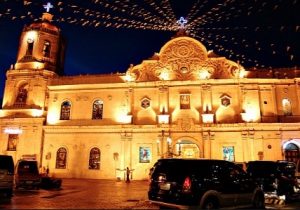
“The Furniture Capital of the Philippines”
History
 Mandaue was a only a community at that time, established by the group of Austonesian people.
Mandaue was a only a community at that time, established by the group of Austonesian people.
In 1638, the Jesuits made it as a bulwark for the church in the Northern Cebu. Decades alter it was then managed by the Recollects. When the Philippine Revolution broke up, a new form of organization outlined with the organic decree of the Central Revolutionary Government was established in the town. However, that form of government ended when the American Troops and destroyed almost the whole town in 1901, killing the leader Benito Ceniza.
Mandaue freed itself from the two oppressors, American and Japanese, on July 4, 1946 together with the entire Philippines. It became a chartered city June 21, 1969 and was recognized as a highly urban city on 1991.
Population/ Language/ Area
Mandaue City has a total land area of 3,487 hectares or 34.87 square kilometers. Each of these square kilometers, 8,112 people live.
Being the 6th smallest government unit in terms of land area, this city has a total population of 331,320 (as of 2010 census). The people here speaks Cebuano as their main language for communication.
Products and Services
Main products of Mandaue City include galvanized iron, stonewares, furniture (one of these are the wicker chairs), Aluminumware, construction materials, styrofoam and marine products. These products and other made Mandaue City bustling city when it comes to economy.
Business Opportunity
Mandaue City is a metropolitan wherein about 40 percent of Cebu’s export companies are located. The success of the business here was due to the low taxes generated from the businesses. The city has now more than 10, 000 business establishments and is accounting the 75 percent of the country’s export in the furniture sector.
Tourist Spots
There are lots of attractions in the city, from business and other infrastructures to museums and natural features, the city is rich to it. Here are some of the city’s tourist spots:
- Monkey Caves
- Cansaga Bay
- Bantayan sa Hari
- Jagobiao Spring
- Cabancalan-Banilad Sinkholes
- San Miguel Brewery
- Cebu International Convention Centre
- Casili Hills
